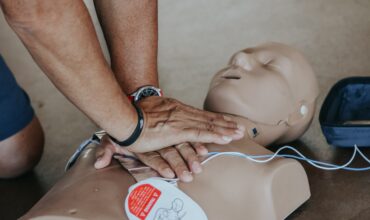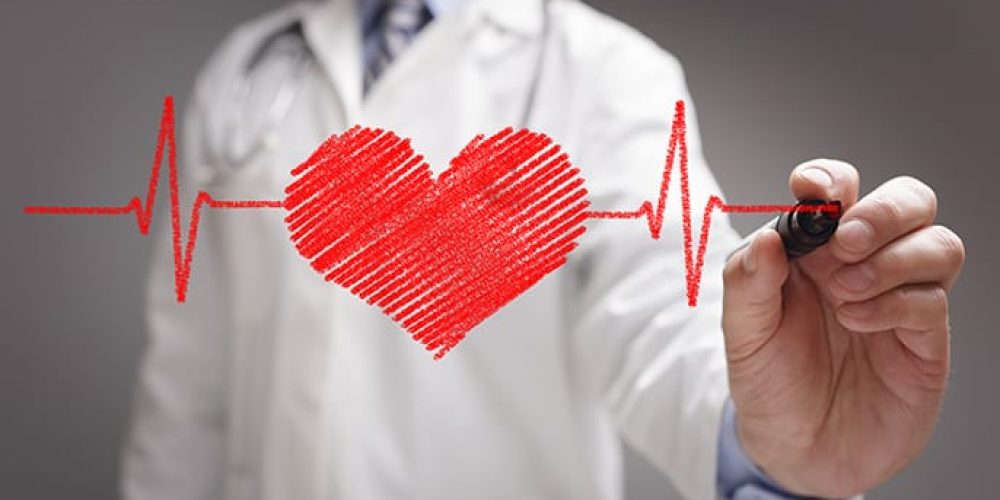- Your cart is empty
- Continue Shopping


Sudden cardiac arrest (SCA) is a condition in which the heart unexpectedly and suddenly stops beating. This is a medical emergency that can be life-threatening if not treated immediately. SCA can occur in people of all ages, including athletes.
SCA in athletes is often caused by an underlying heart condition that has not been diagnosed. These conditions can include structural abnormalities of the heart, such as congenital heart defects, or functional problems with the heart, such as electrical problems that disrupt the normal rhythm of the heart. SCA can also be caused by other factors, such as the use of certain medications or illegal drugs, or extreme physical exertion.
An AED can be used to shock the heart back into a normal rhythm, potentially saving the person’s life. To use an AED, the device is turned on and the pads are placed on the person’s chest. The AED analyzes the person’s heart rhythm and determines whether a shock is necessary. If a shock is needed, the AED will instruct the user to press a button to deliver the shock. The AED can be used by anyone, as it provides clear instructions and does not require any medical training.
Get a physical examination: Athletes should have a thorough physical examination before participating in any sports activities. This can help identify any underlying heart conditions that may increase the risk of SCA.
Stay hydrated: Proper hydration is important for maintaining a healthy heart and reducing the risk of SCA. Athletes should drink plenty of fluids before, during, and after physical activity.
Warm up and cool down: A proper warm-up and cool down can help reduce the risk of SCA. These activities can help gradually increase and decrease heart rate and blood pressure, which can help prevent SCA.
Recognize the signs of SCA: It is important for athletes and coaches to be aware of the signs of SCA, which can include sudden collapse, loss of consciousness, and abnormal breathing. If SCA is suspected, it is important to call 911 and start CPR immediately.
Use caution with certain medications: Some medications, such as stimulants and decongestants, can increase the risk of SCA in certain individuals. Athletes should be cautious when using these medications and should discuss any potential risks with their healthcare provider.
There have been several instances of athletes experiencing sudden cardiac arrest (SCA) while participating in sports activities. Here are three examples:
Reggie Lewis: Lewis was a professional basketball player who collapsed and died during a practice session in 1993. An autopsy revealed that he had a heart condition called coronary artery dissection, which can lead to SCA.
Fabrice Muamba: Muamba was a professional soccer player who collapsed on the field during a match in 2012. He was later diagnosed with an inherited heart condition called hypertrophic cardiomyopathy, which can cause SCA.
Antonio Puerta: Puerta was a professional soccer player who collapsed on the field during a match in 2007. He later died in the hospital as a result of SCA. An autopsy revealed that he had a heart condition called arrhythmogenic right ventricular dysplasia, which can cause SCA.
It is important to note that SCA can occur in people of all ages and athletic abilities, and it is often caused by an underlying heart condition that has not been diagnosed.
The fatality rate for SCA varies depending on a number of factors, including the underlying cause of the SCA, the speed at which treatment is received, and the person’s overall health. In general, the fatality rate for SCA is high, with estimates ranging from 50-90%. However, the chances of survival can be significantly improved if SCA is treated quickly and effectively.
For example, if SCA is treated within a few minutes with cardiopulmonary resuscitation (CPR) and defibrillation (using a defibrillator to shock the heart back into a normal rhythm), the chances of survival can be as high as 50-70%. However, if treatment is delayed, the chances of survival decrease significantly.
There have been several instances of people surviving SCA, even after being in cardiac arrest for extended periods of time. For example, in 2019, a woman in the UK survived SCA after being in cardiac arrest for nearly 6 hours. In 2016, a man in the US survived SCA after being in cardiac arrest for 45 minutes. In both cases, the individuals received prompt treatment and were able to recover fully.
Implementation Guide